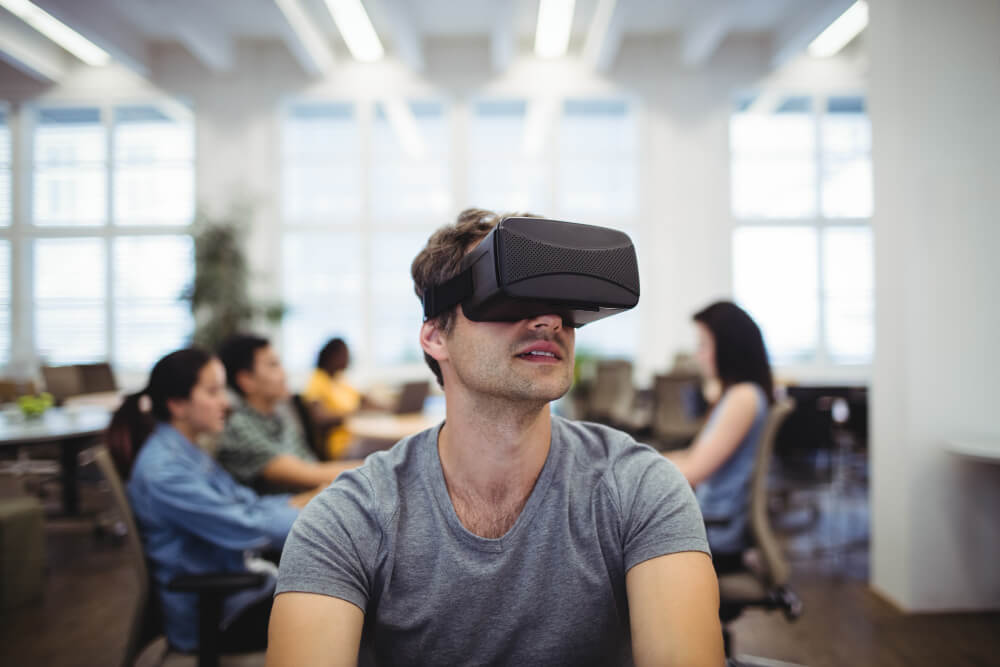Implementing Virtual Reality (VR) Training in Small Companies and for Individual Trainers
Table of Contents:
How to implement virtual reality training with a limited budget? Although it might seem difficult, it is not. There are numerous platforms, like Mazer Trainer, which come with tools enabling you to plan, set up, and conduct virtual training on your own for an affordable price. However, VR training implementation isn’t just about the platform; it also involves optimizing other elements, like hardware. In this article, we shall look at this in more detail. We invite you to read on.
Assessing the Need for VR Training Implementation in a Small Business
Before implementing VR training, you need to be 100% sure that it is exactly what you need. How to achieve that? Answer the following questions:
- Is my team stationed in one location or spread across the country/world?
- Does my business already have VR equipment?
- Is current training not engaging enough?
- Do I need to conduct training involving real-life-situation simulations?
- Does my training involve a lot of data visualization?
- Does my company have a high turnover?
- Will the training in VR be safer than in real life?
If you mostly answered yes, then it means that it is time to include VR in the learning process.
How to Implement Virtual Reality into Training in Small Companies or as an Individual Trainer? The Must-Haves
So, how do you implement virtual reality training? There are two main factors you need to consider:
- equipment—finding affordable, top VR headsets; ones that will do the trick and let your employees/clients immerse themselves in the training,
- VR training platform—a good platform where you can design and conduct your VR training.
What is important here is that you cut costs without downgrading the quality. How to do that? For instance, choose a no-code VR training platform, like Mazer Trainer.
Such a platform will enable you (or other members of your team) to prepare training on your own, without any assistance from IT specialists. They come with preloaded assets—environment, objects, and functions—which you can use together to form your training. Naturally, they might have limited flexibility, but they offer the most value for the limited money small businesses and individual trainers have.
Implementing VR Training in Practice
Having chosen your platforms and equipment, you need to start planning your training. This involves several steps:
- Learning how to use the tool—it is good that you involve all the people who might want to prepare and conduct VR training in your company.
- Preparing your first session—using the elements to set up your first training.
- Going on a test run—checking the training in practice to find issues and learn how to solve them.
You should also remember that your implementation does not end purely when every step of the above is completed. Instead, you’ll need to constantly monitor the effectiveness of your VR training (preferably using data, if you can collect it) and gather user feedback. This way, you will learn how to extract even more value from virtual reality and enhance your future training.
The Takeaway
Implementing VR training does not have to be costly nor difficult—it is accessible even for smaller companies and individual trainers. While it will still require you to invest in VR headsets and a platform to develop your training courses, these investments are not big and will pay off in just a few months. Therefore, we recommend switching to virtual reality and entering the new era of corporate learning!
You might also read: Data Visualization in Virtual Reality

Author: Rafał Siejca
Rafal has over twenty years of corporate experience, including roles at Millennium Bank, Comarch, and leading software teams at PZU, one of Europe’s largest insurance companies. As one of Poland’s few true VR experts with a decade of experience, he ensures timely, high-quality project delivery as CEO and CTO.










